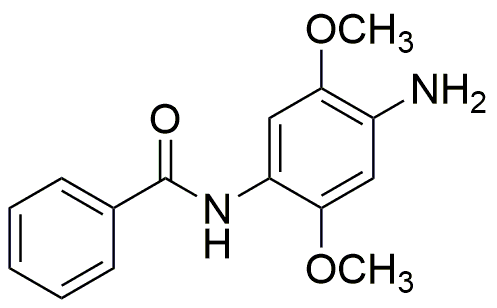Fast Blue RR is widely utilized in research focused on:
- Histology and Pathology: This chemical is commonly used as a dye in tissue staining, allowing researchers to visualize cellular structures and identify specific cell types in histological samples.
- Neuroscience: Fast Blue RR serves as a retrograde tracer in neuronal studies, helping scientists trace the pathways of neurons and understand neural connections in animal models.
- Environmental Monitoring: It is employed in assessing the presence of certain pollutants in water samples, providing a visual indication of contamination levels.
- Pharmaceutical Research: Fast Blue RR is used in drug formulation studies, particularly in assessing the release profiles of active pharmaceutical ingredients due to its ability to bind with various compounds.
- Food Industry: This compound can be utilized as a food colorant, providing a vibrant hue to products while adhering to safety regulations, making it a popular choice among food manufacturers.
General Information
Properties
Safety and Regulations
Applications
Fast Blue RR is widely utilized in research focused on:
- Histology and Pathology: This chemical is commonly used as a dye in tissue staining, allowing researchers to visualize cellular structures and identify specific cell types in histological samples.
- Neuroscience: Fast Blue RR serves as a retrograde tracer in neuronal studies, helping scientists trace the pathways of neurons and understand neural connections in animal models.
- Environmental Monitoring: It is employed in assessing the presence of certain pollutants in water samples, providing a visual indication of contamination levels.
- Pharmaceutical Research: Fast Blue RR is used in drug formulation studies, particularly in assessing the release profiles of active pharmaceutical ingredients due to its ability to bind with various compounds.
- Food Industry: This compound can be utilized as a food colorant, providing a vibrant hue to products while adhering to safety regulations, making it a popular choice among food manufacturers.
Documents
Safety Data Sheets (SDS)
The SDS provides comprehensive safety information on handling, storage, and disposal of the product.
Product Specification (PS)
The PS provides a comprehensive breakdown of the product’s properties, including chemical composition, physical state, purity, and storage requirements. It also details acceptable quality ranges and the product's intended applications.
Certificates of Analysis (COA)
Search for Certificates of Analysis (COA) by entering the products Lot Number. Lot and Batch Numbers can be found on a product’s label following the words ‘Lot’ or ‘Batch’.
*Catalog Number
*Lot Number
Certificates Of Origin (COO)
This COO confirms the country where the product was manufactured, and also details the materials and components used in it and whether it is derived from natural, synthetic, or other specific sources. This certificate may be required for customs, trade, and regulatory compliance.
*Catalog Number
*Lot Number
Safety Data Sheets (SDS)
The SDS provides comprehensive safety information on handling, storage, and disposal of the product.
DownloadProduct Specification (PS)
The PS provides a comprehensive breakdown of the product’s properties, including chemical composition, physical state, purity, and storage requirements. It also details acceptable quality ranges and the product's intended applications.
DownloadCertificates of Analysis (COA)
Search for Certificates of Analysis (COA) by entering the products Lot Number. Lot and Batch Numbers can be found on a product’s label following the words ‘Lot’ or ‘Batch’.
*Catalog Number
*Lot Number
Certificates Of Origin (COO)
This COO confirms the country where the product was manufactured, and also details the materials and components used in it and whether it is derived from natural, synthetic, or other specific sources. This certificate may be required for customs, trade, and regulatory compliance.


